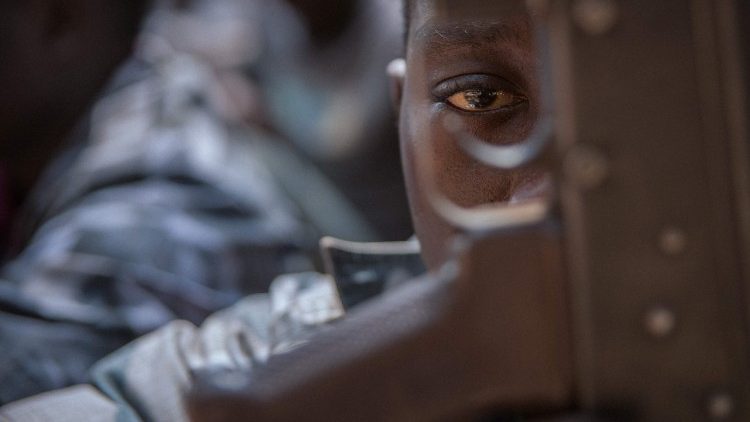
Save the Children: 'One child in five is a victim of war'
By Linda Bordoni
ĐÓMAP”Œșœ Francis has repeatedly warned that across the planet, âa true world war is being fought piecemealâ and repeatedly he has decried the fact that so many children continue to be victims of conflict.
This reality was confirmed by a report, released on Friday by the global childrenâs charity, âSave the Childrenâ that reveals that more children are living in areas affected by armed conflict than at any time in more than 20 years.
The report, entitled âStop the War on Children: Protecting Children in 21st Century Conflictâ, reveals that 420 million children â thatâs nearly one in five â were living in conflict-affected areas in 2017, up 30 million from the previous year.
Save the Childrenâs Keyan Salarkia, one of the co-writers of the report, spoke to Vatican News about some of the reportâs most salient findings.
Salarkia said the report sets out two core arguments, the first being that the scale of the problem regarding children in conflict is increasing, as is the scale of their suffering.
âOne fifth of children worldwide live in conflict, which is the highest point since the end of the Cold Warâ he said.
Children increasingly at risk
Whatâs more, children in conflict zones are increasingly at risk.
One of the key findings that testifies the brutality of modern day conflicts, Salarkia explained, is that âhalf a million babies have died in the last five years alone in just ten countriesâ.
Another sobering fact is that 870,000 children have died in conflict during the same period, âbefore they have even managed to turn five-years oldâ.
âSo, Selarkia noted, we are seeing both an increase in the number of children in conflict and increasing harm to those childrenâ.
Ten worst countries for children
Selarkia said the report looks at a number of things including the combination of the number of children in conflict and their exposure to violations.
He explained there are âred-lightsâ defined by the United Nations and that include recruitment and use in armed groups, sexual violence, abductions.
âCombining the two, we came up with a list of the ten worst places in 2017 and they include Yemen and Syria, tragic icons of modern conflict, but also places like South Sudan and Nigeria where in the last three or four years children have continued to be exposed to great risk.
Other countries pinpointed by the report are Afghanistan, the Central African Republic, the Democratic Republic of Congo, Iraq, Mali and Somalia.
100 years of âSave the Childrenâ
Selarkia said the report coincides with 100 years of Save the Children which means that for at least the past 100 years there have been organizations and charities dedicated to the promotion and protection of childrenâs rights that respond to the needs of children.
âWhat we have seen particularly over the last 10 or 15 years, is less compliance with international rules and norms and the perpetration of violations like sexual violence, killing and maiming of children,â he said.
All this, coupled with the fact that those responsible are not being held to account.
âThose things combined, have led to environment where not only are children increasingly affected, but perpetrators of violence are not being held to account, and this recreates a pattern of violence against childrenâ he said.
Recommendations
Selarkia said the report is officially being launched at the Munich Security Conference in Germany, a meeting attended by world leaders and policy-makers.
It includes an appeal to take action in three ways:
- Upholding standards and norms: not bombing schools, not attacking health care centers, not denying access arbitrarily;
- Accountability: making sure that where violations are taking place, individuals are facing justice;
- Pursue new ways to support childrenâs recovery from the horrors of conflict and take practical steps to support and protect children in crisis zones.
What can we do?
What we can do, Selarkia concludes, is to make sure that the people responsible for making these changes â our policy-makers and our government leaders â excert pressure so that those who are responsible for violence against children and for not protecting them be rendered accountable.
âSo put pressure on your government, demanding protection for children in conflict and supporting the narrative that âchildren are childrenâ: we need to re-establish the centrality of child protectionâ.
Thank you for reading our article. You can keep up-to-date by subscribing to our daily newsletter. Just click here






